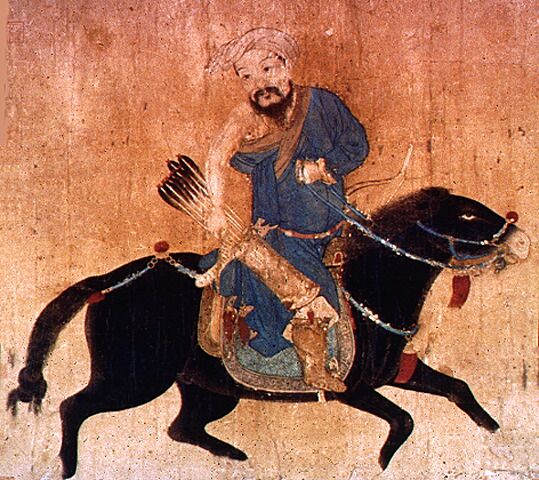Listen to this blog post about the Mongol Army here
How could a force of 100,000 mounted, lightly armored warriors armed with bow and arrows defeat nearly every other army that came against them? Most of the Mongol’s enemies outnumbered them by the hundreds or thousands. How then could the Mongol army continually win against such odds? A combination of training, tactics, discipline, intelligence and constantly adapting new tactics gave the Mongol army its savage edge against the slower, heavier armies of the times. The Mongols lost very few battles, and they usually returned to fight again another day, winning the second time around.
“The Reasons the Mongolian Army Was Unstoppable”
For the full “History Unplugged” podcast, click here!
What European and Middle Eastern armies saw as weaknesses were actually strengths in the Mongol army: their much smaller horses were more agile than their heavy counterparts. The light compound bow used by the Mongols had great range and power, the arrows could penetrate plate armor at a close distance.
Mongol Army: Training
Mongols began riding at any early age, and hunting as soon as they could hold a bow. Both Mongol horses and people were tough, agile and sturdy with great endurance. The Mongol army continually trained the troops in rotations, formations and diversionary tactics. They trained for as many circumstances as they could think of so they could react fast and sure to any tactic of the enemy.
Archery
The Mongol army was primarily mounted archers using a compound bow made of horn, wood and sinew. The bows’ range was unmatched at the time for force and accuracy, and the archers could shoot in any direction, even behind. The archers made possible many of the Mongol’s battlefield tactics, riding to encircle the enemy then raining arrows among them, killing many men and horses from a distance.
Discipline
Every soldier received a share of whatever booty was taken. Mongol warriors fought under strict discipline, and every man was subject to it, from generals to the lowest soldier. The training regimen, discipline, leadership and superb intelligence made the Mongol army an unconquerable force.
Mongol Army: Breakup of Tribal Unity
Genghis wanted his army loyal to him, not to their tribal leaders. He broke up the tribes when he assigned men to various units in the army to ensure their basic loyalty was to their units and to Genghis. Genghis then organized his army by the decimal system in groups of 10, 100, 1000 and 10,000 with leaders at each level. Each unit could fight at the unit level or in combination with all of the other units, generally without constant supervision.
Mobility and Speed
The speed of the Mongol army wasn’t repeated again until the 20th century. Mongol warriors could ride 60 to 100 miles a day, an unheard of speed in those times. Each man had four or five horses that traveled with the army so he could switch to a fresh horse often. Mongol ponies were small but fast, and could live off even the sparsest grasses. Mongol horses had great endurance and could run for miles without tiring.
This article is part of our larger selection of posts about the Mongol Empire. To learn more, click here for our comprehensive guide to the Mongol Empire.
This article is also part of our larger selection of posts about the Mayans. To learn more, click here for our comprehensive guide to the Mayans.
For more information on counter-intuitive facts of ancient and medieval history, see Anthony Esolen’s The Politically Incorrect Guide to Western Civilization © 2008. You can find it at Amazon or Barnes & Noble.
You can also check it out by clicking on the buttons to the left.
Additional Resources About The Mongols
Cite This Article
"What Made the Mongol Army So Successful?" History on the Net© 2000-2024, Salem Media.
July 24, 2024 <https://www.historyonthenet.com/what-made-the-mongol-army-so-successful>
More Citation Information.

